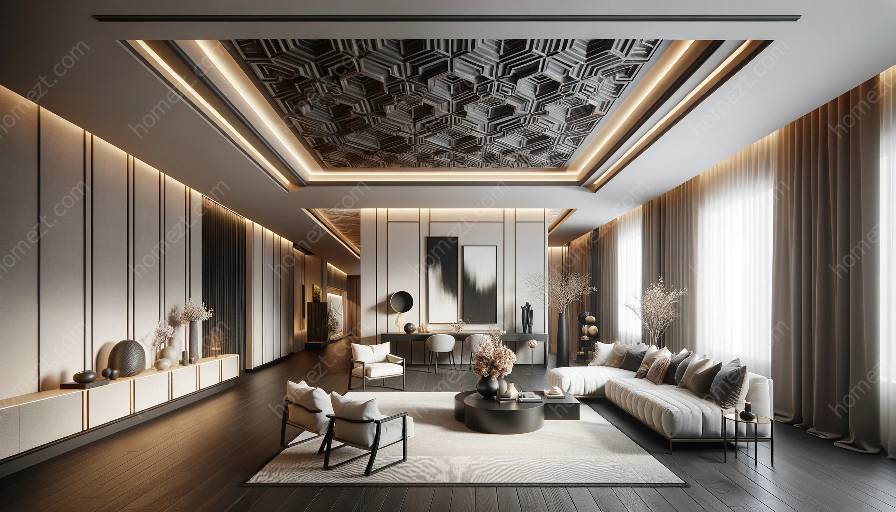When it comes to interior design, the ceiling is often an overlooked element. However, creating a statement ceiling can transform a space and elevate the overall design aesthetic. Whether you're designing a residential or commercial space, there are key factors to consider to ensure that your statement ceiling is not only visually impactful but also functional and harmonious with the rest of the decor.
Understanding the Space
The first step in creating a statement ceiling is to understand the space in which it will be implemented. Consider the height of the ceiling, the architectural details, and the overall style of the room. A statement ceiling should enhance the existing elements of the space and not compete with them. For example, a room with a low ceiling may benefit from a statement ceiling with vertical elements that draw the eye upward, creating a sense of height.
Lighting and Acoustics
Another crucial factor to consider is lighting and acoustics. Since the ceiling plays a significant role in the distribution of light within a space, it's essential to design a statement ceiling that complements the lighting scheme and maximizes natural light. Additionally, if the space requires good acoustics, such as a restaurant or a conference room, the materials and design of the statement ceiling should contribute to sound control and enhancement.
Material Selection
Choosing the right materials for your statement ceiling is essential. The materials should not only align with the overall design concept but also provide durability and longevity. Whether it's wood, metal, glass, fabric, or a combination of materials, each choice will impact the visual and tactile experience of the space. Consider the maintenance requirements and the impact of the materials on the indoor environment when making your selection.
Architectural Details and Ornaments
Architectural details and ornaments can elevate a statement ceiling to an entirely new level. Consider incorporating molding, trim, coffered ceilings, or decorative elements to add depth and visual interest. These details can create a sense of grandeur and sophistication, making the ceiling a focal point of the space.
Color and Pattern
The use of color and pattern on a statement ceiling can dramatically transform the atmosphere of a room. Bold colors and patterns can make a space feel more energetic and dynamic, while softer hues and subtle patterns can create a calming and serene atmosphere. It's important to consider the overall color scheme of the space and ensure that the statement ceiling complements the existing decor.
Visual Impact and Harmony
Ultimately, a statement ceiling should make a visual impact while maintaining harmony with the rest of the interior design. It should enhance the overall theme of the space and contribute to a cohesive and balanced aesthetic. Whether it's through texture, shape, or scale, the statement ceiling should be a deliberate and integrated element of the design.
Maintenance and Longevity
Lastly, consider the maintenance and longevity of the statement ceiling. Ensure that the materials and design are easy to maintain and will stand the test of time. A statement ceiling should continue to inspire and impress for years to come.
Conclusion
Creating a statement ceiling requires careful consideration of various factors, from understanding the space and selecting the right materials to incorporating architectural details and ensuring visual harmony. By focusing on these key factors, you can create a statement ceiling that not only captures attention but also enhances the overall interior design.






































